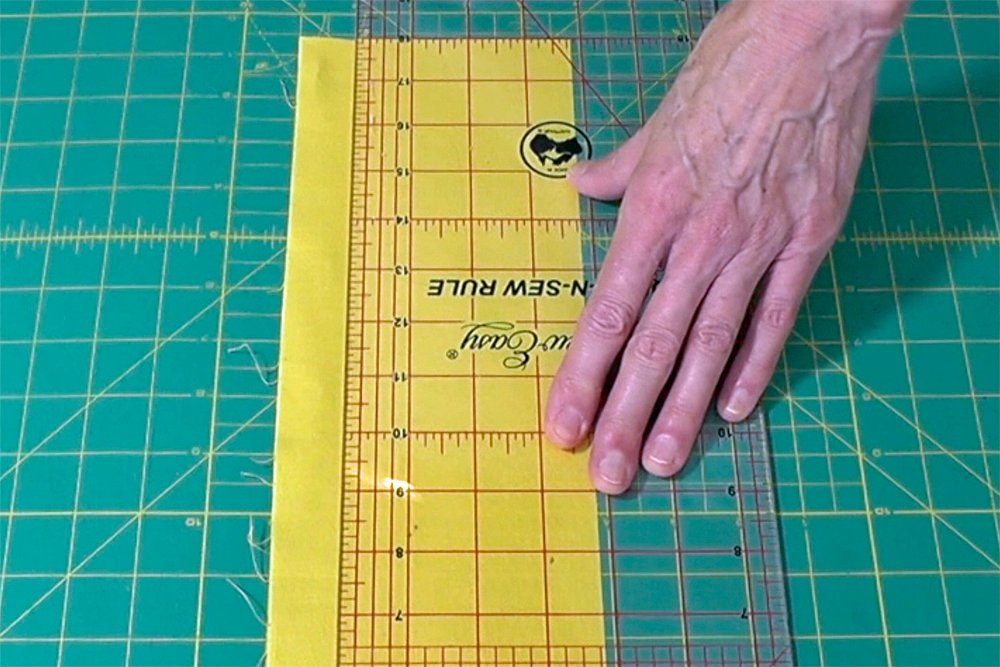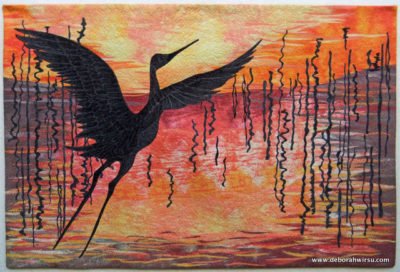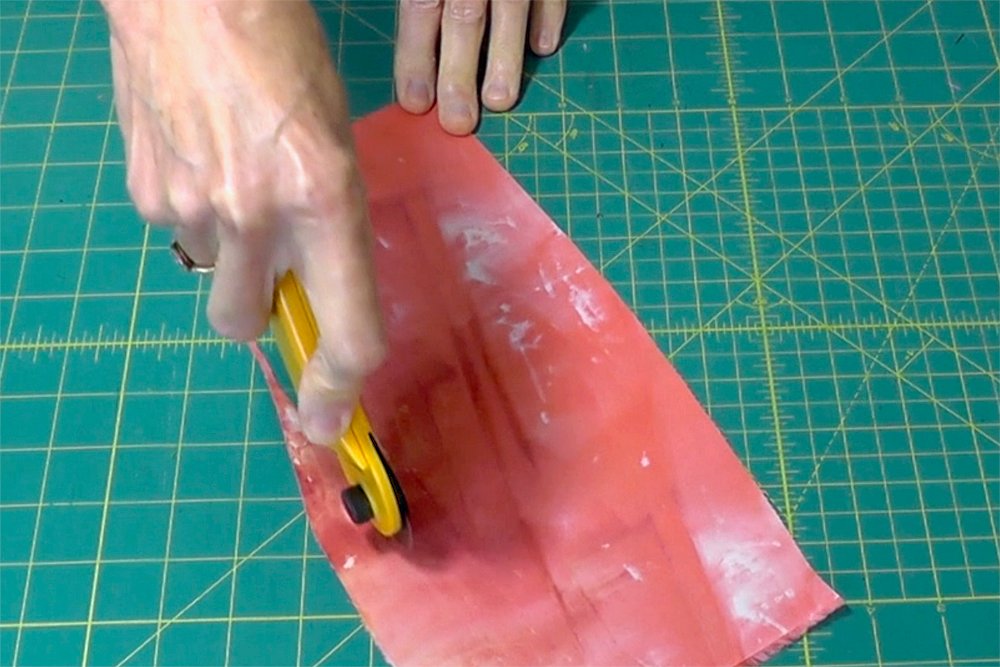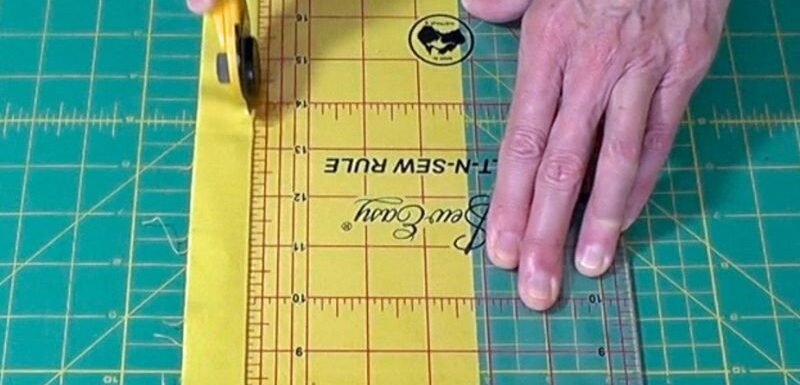Understanding best practices in rotary cutting for fabric collage and quilting will not only help you make neater, cleaner fabric cuts, but safeguard your fingers, too!
Yesterday, I spent a lot of time free-cutting fabric, in preparation for some samples to include in a new course.
This got me thinking about rotary cutters.
- Is there a right and a wrong way to use them?
- Are they safe?
- Are they necessary?
Before the days of rotary cutters, every piece of a quilt or patchwork project was cut with scissors.
Of course, this made accuracy more challenging, especially when planning points and intricate designs.
The advent of rotary cutters, clear templates, quilt rulers and self-healing cutting mats transformed the quilting world, allowing you to prepare accurate points, ultra-straight edges, and strips of consistent width.
This article guides you through the most important rotary cutting skills for fabric collage and quilting.
Rotary Cutting Skills for Fabric Collage and Quilting

Of course, there are other ways to use rotary cutters, too, but first things first.
Rotary cutting straight edges
- Prepare your fabric by making sure it is smooth and wrinkle-free.
- It’s possible to cut several layers at once – just take care you don’t try for too many, which can result in the fabric stack shifting underneath the ruler.
- Hold the ruler with your free hand, keeping your fingers well away from the edge!

- Hold the rotary cutter so that the blade sits neatly against the side of the ruler, at right angles to the edge of the ruler.
- If the blade is angled or leaning, your cut edge may not be even.

Should you cut with the fabric grain, or not?
This depends on what you’re making.
For quilts – especially if using checked, plaid, or striped fabric – cutting with the grain is essential.
But if you’re creating an art quilt or even many types of patchwork, then you can, in reality, cut the fabric in any way you wish.
When I’m creating art quilts I don’t, in the main, worry about the grain, unless it will affect the look of the quilt.
If there is a particular feature, colour or effect I want to use in my collage or quilt, then that is what I will focus on, rather than the grain.
I have been known to cut one small shape from the very centre of a piece of fabric when that sections offers just the ‘look’ I’m after!
Free-cutting with a rotary cutter
This is so much fun!
And it can be useful when you’re building up fabric collage pictures that will later be heavily thread sketched or quilted.
This work that I created a few years back was almost entirely cut using a rotary cutter and free-cutting the shapes – other than the bird, of course, which required a little more planning and accuracy!

Mind your fingers!
The MOST IMPORTANT thing to remember, especially when free-cutting, is to keep your free hand well out of the way!
Obviously, there is often a need to hold the fabric with your free hand, so what I like to do is keep the hand holding the fabric BEHIND the direction I’m cutting.

That way, I’m never heading dangerously towards my fingers!
Rotary cutters are entirely safe if used correctly.
These days, many different designs and shapes are available, with most having some sort of protective cover.
Always replace the sheath when you’re not using your cutter.
If you’re concerned about safety, or always when working with children, purchase some cut-resistant safety quilting gloves.
The cutting blade
If the blade on your cutter becomes dull or knicked, replace it with a new blade.
Not only will a damaged or worn blade not cut as neatly, but it’s also more dangerous to use.
- Keep a supply of spare blades handy.
- Avoid cutting paper with your new blade. Use an old one for cutting paper.
Caring for your cutting mat
Self-healing cutting mats are not indestructible!
If you keep cutting on the same lines, eventually the cuts will become permanent, so try to vary the areas of the mat that you use.
Also, when free-cutting, if you’re cutting curves and corners, try to avoid angling the blade so that it gouges into the mat.
Your mat won’t thank you for that!
Stay safe and have fun!
